Stonehenge's summer solstice orientation is seen in monuments all over the UK in amazing photos
The sun lines up with all kinds of Neolithic features.
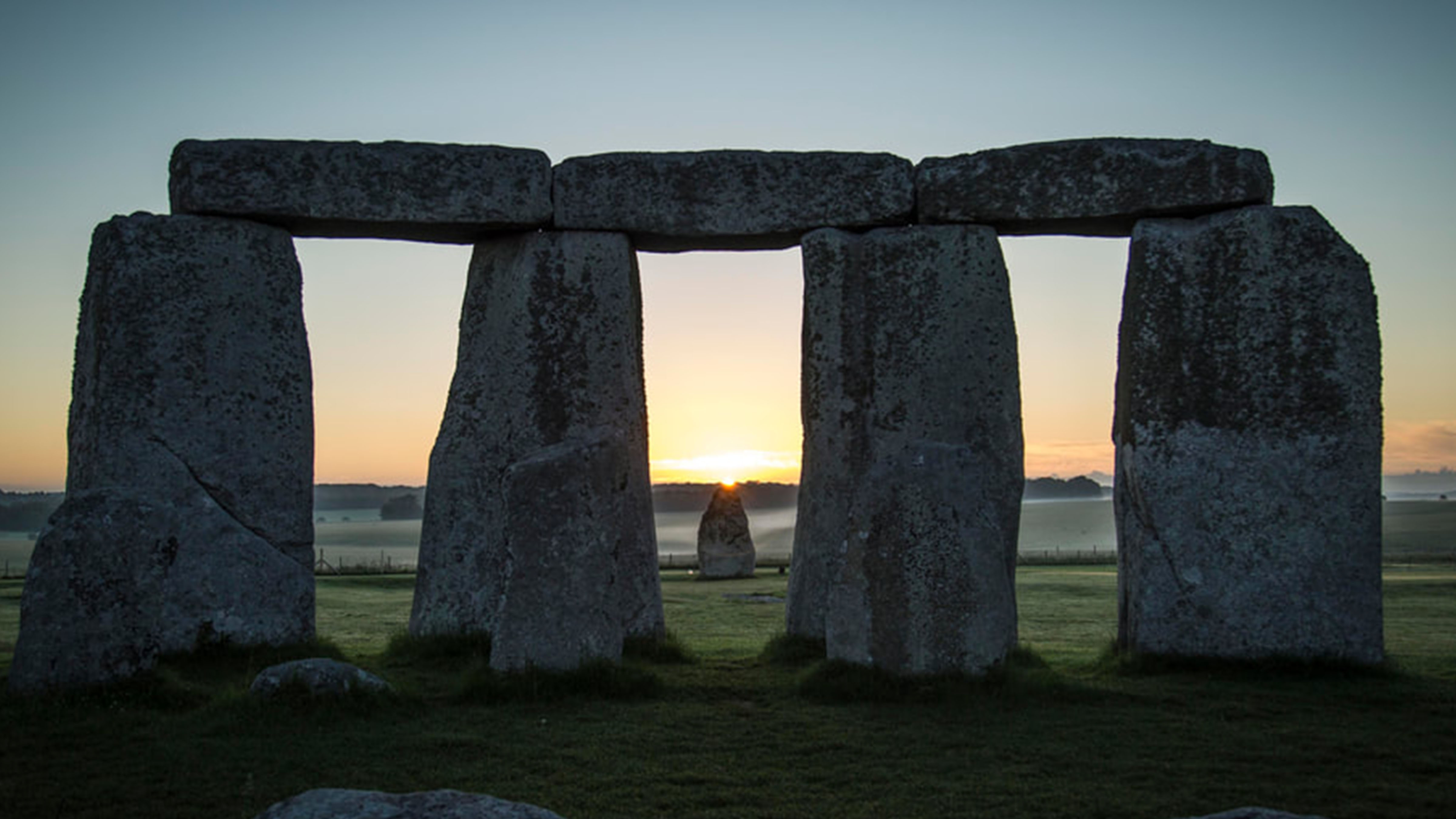
In search of the sun, landscape and astrophotographer Josh Dury has been all over the United Kingdom.
Ancient cultures in many societies used the sun, the moon and the stars to create alignments. The structures you will see in this slideshow are called monuments. Some of the monuments' uses are lost to history. But many archaeologists say celestial alignments were important.
From Stonehenge to Stanton Drew, witness special times of the year when stone circles, barrows and other ancient structures align with the sky. The summer solstice, the soaring Milky Way, and dramatic shaft lighting feature in these photos.
Dury took the landscape day images with a Canon 5D Mark III, using a lens ranging from 24 to 105 millimeters. Night sky images, such as the Milky Way, used a Sony A7S Mark II with a Sigma 14 millimeter lens. All images used a static tripod.
Related: Stonehenge may have been used as a solar calendar
Stonehenge on the eve of summer solstice
Stonehenge, roughly 5,000 years old, is the most famous of United Kingdom stone circles. It is located within a huge "ritual landscape" of many square miles, including a ceremonial procession area and other monuments. Stonehenge also evolved considerably over its period of use, like many monuments of its type.
Dury calls this image "my pride and joy" and says he was lucky to get access to the interior of the circle. It was taken on the day before summer solstice, as every year during that June event the circle is opened for other ceremonies that bring in thousands.
"As you can see, there are three of the surviving archways of the monument, and you have one stone in the distance," Dury said. "This is known as the Heel Stone, and is the physical marker for the midsummer sunrise. What we're seeing here is effectively a 4,500-year old alignment, which we can still see today."
Green Comet C/2022 E3 (ZTF) over Stonehenge
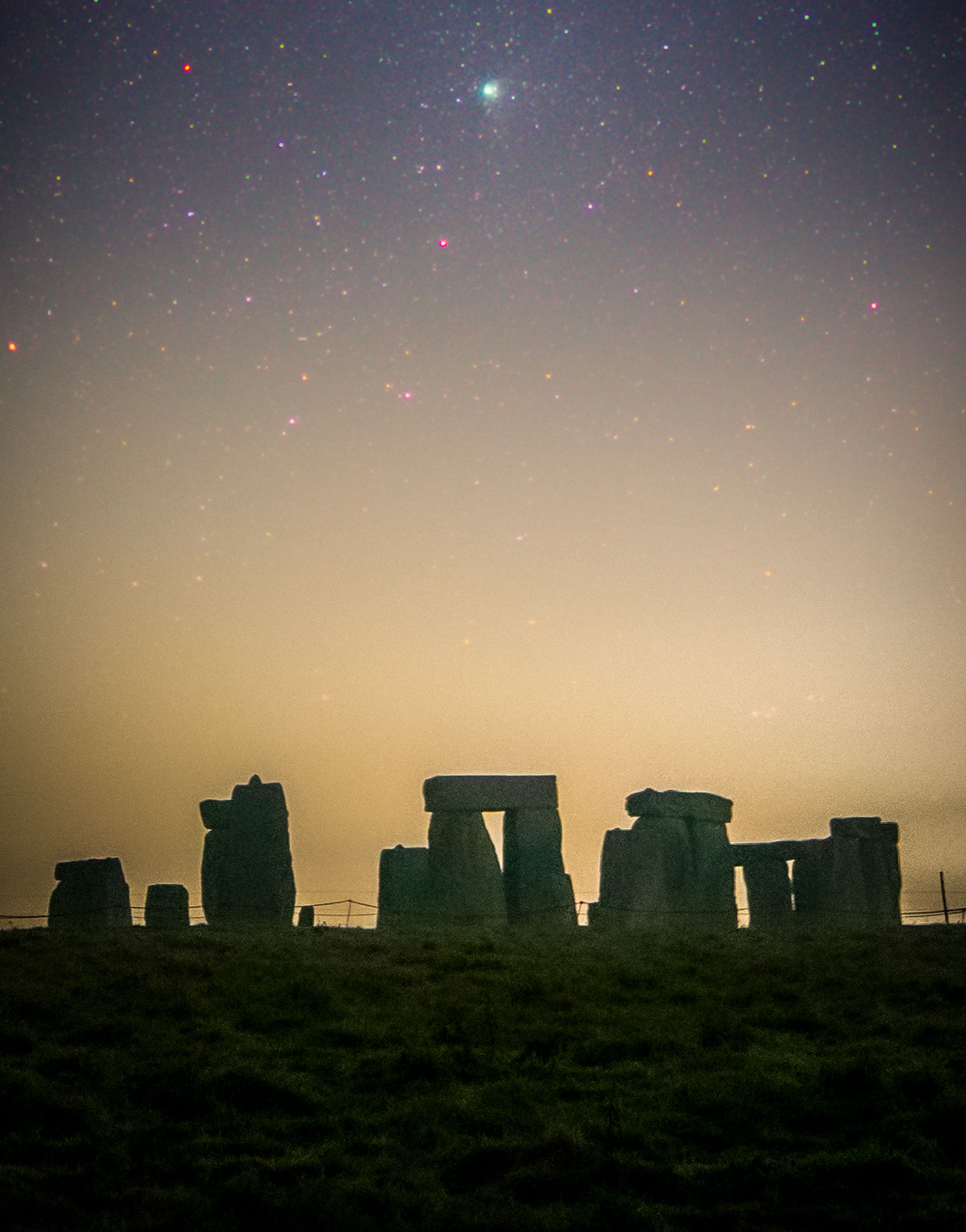
Stonehenge is overshadowed by Comet C/2022 E3 (ZTF), which orbits the sun about every 50,000 years, according to NASA. After its close approach in our solar system in 2022-23, it's possible that the encounter with the sun may throw the green comet permanently out of the solar system.
Dury captured this photo in 2022 and reflected on how old Stonehenge is. The stones visible here were erected in about 2,500 BCE, and earlier henge monuments were there in perhaps 3,000 BCE or so. But as long ago as that is, that human history pales with when the comet last flew over Wiltshire.
"The last time it passed through our solar system, Stonehenge had not been built," Dury said, "and it's a comet which we know for certainty, we will never see again in our lives."
Comet C/2020 F3 (NEOWISE) at Stonehenge
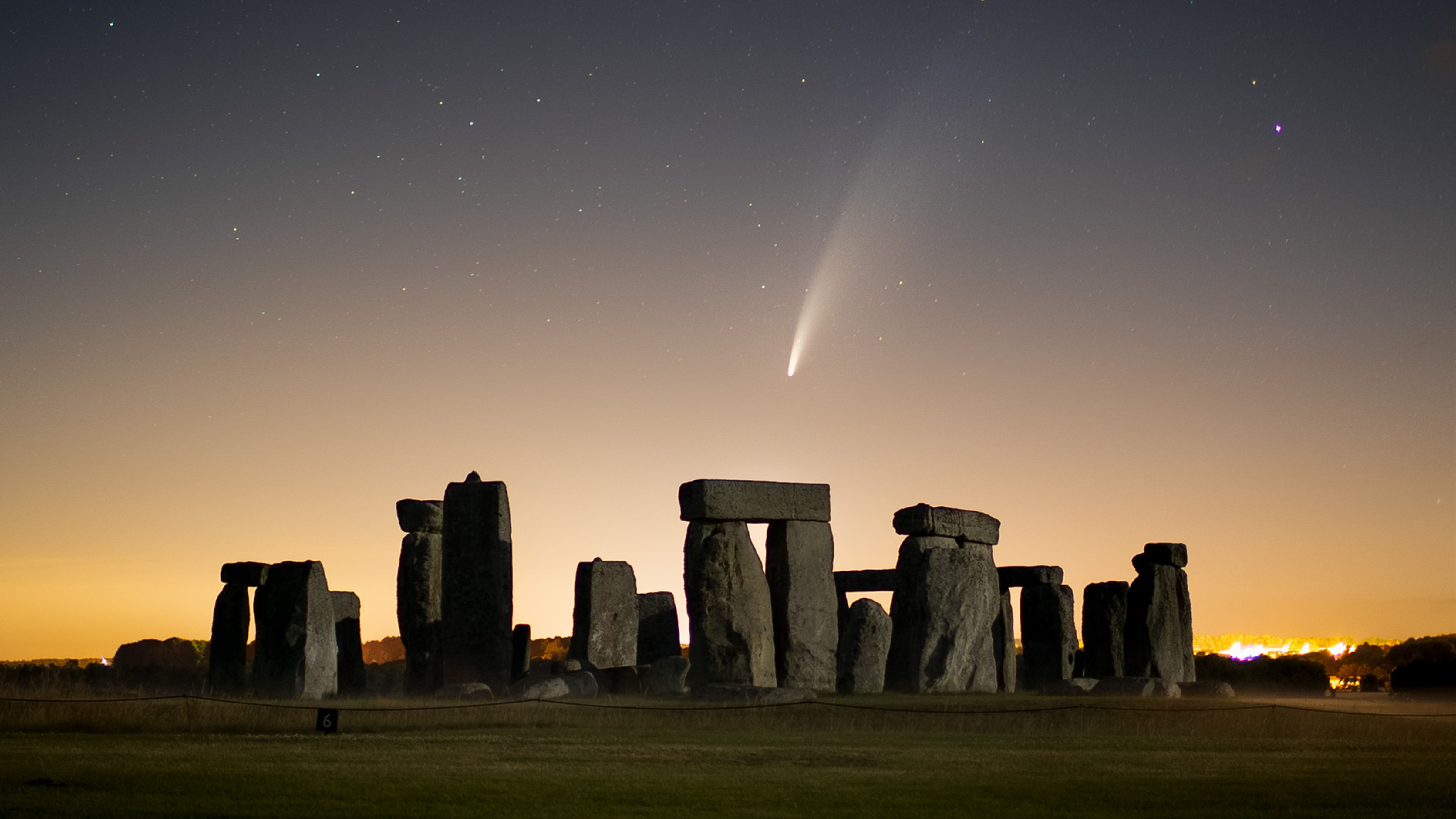
Stonehenge is visible here underneath Comet C/2020 F3 (NEOWISE). The comet made its closest approach to the sun in December 2020 and was visible to the naked eye in certain parts of the world.
It circles the solar system roughly every 7,000 years. Stonehenge was not yet made at this time. Although some older settlements such as Jericho (in modern-day Palestine) can be dated back as far as 12,000 years, Dury noted that human civilization has changed considerably since NEOWISE last flew by.
"In our day and age, we're not going to see this again," Dury said of the comet. "The question is: what will our future generations see the next time this comet visits?"
The Callanish Stones and the Northern Lights
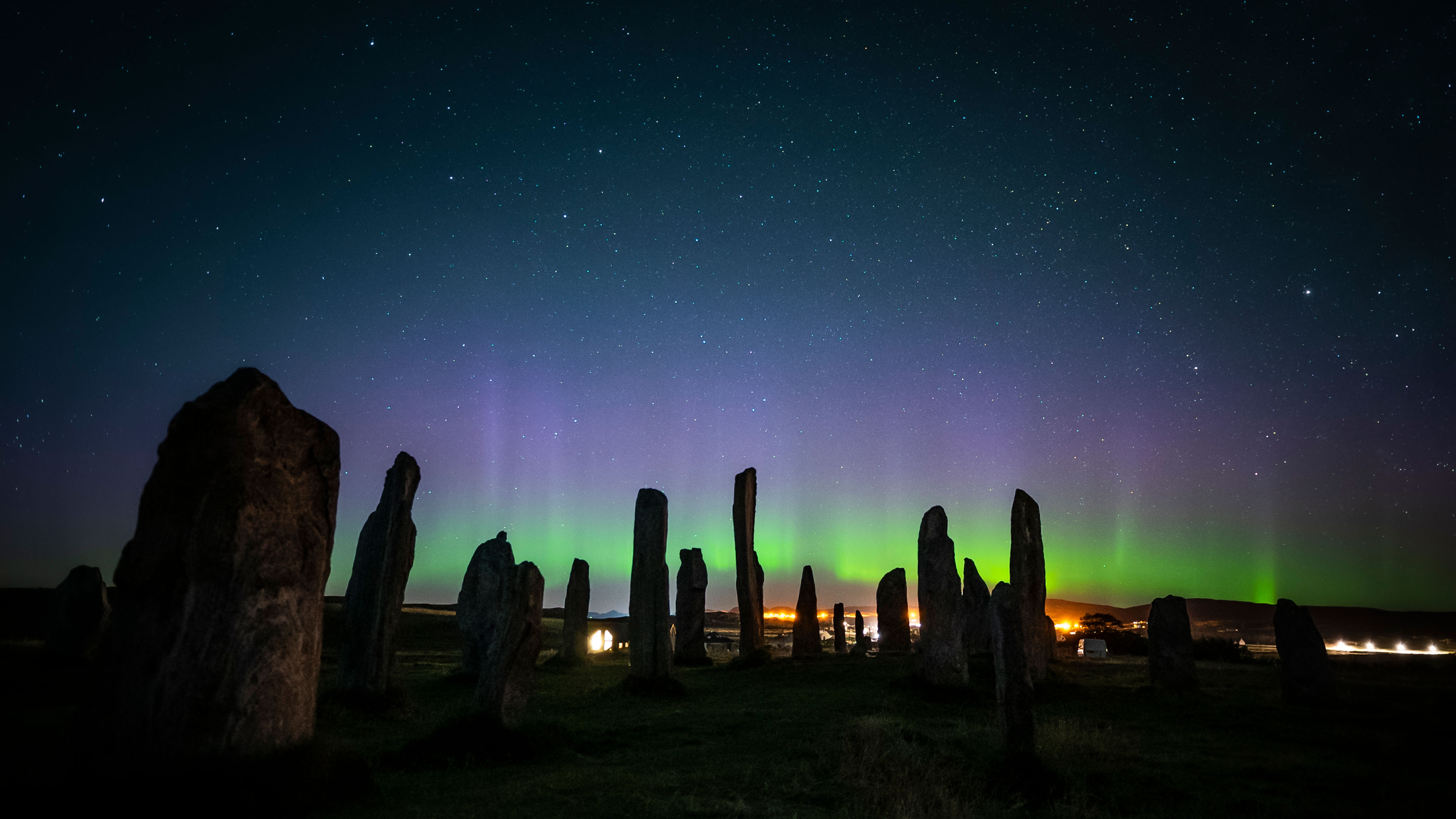
The Callanish Stones are in the Outer Hebrides, Scotland. They are famous for alignments to "lunar standstills", meaning when the moon and the sun are farthest apart or closest together in the sky. The timing between these periods is roughly 18.6 years.
"The image itself is clearly demonstrating the Northern Lights, as visible from the very edges of the United Kingdom," Dury says. "This is very exciting, really just seeing an active geomagnetic storm taking place at that north celestial pole, which can be seen against the backdrop of Callanish."
Callanish Stones at sunrise
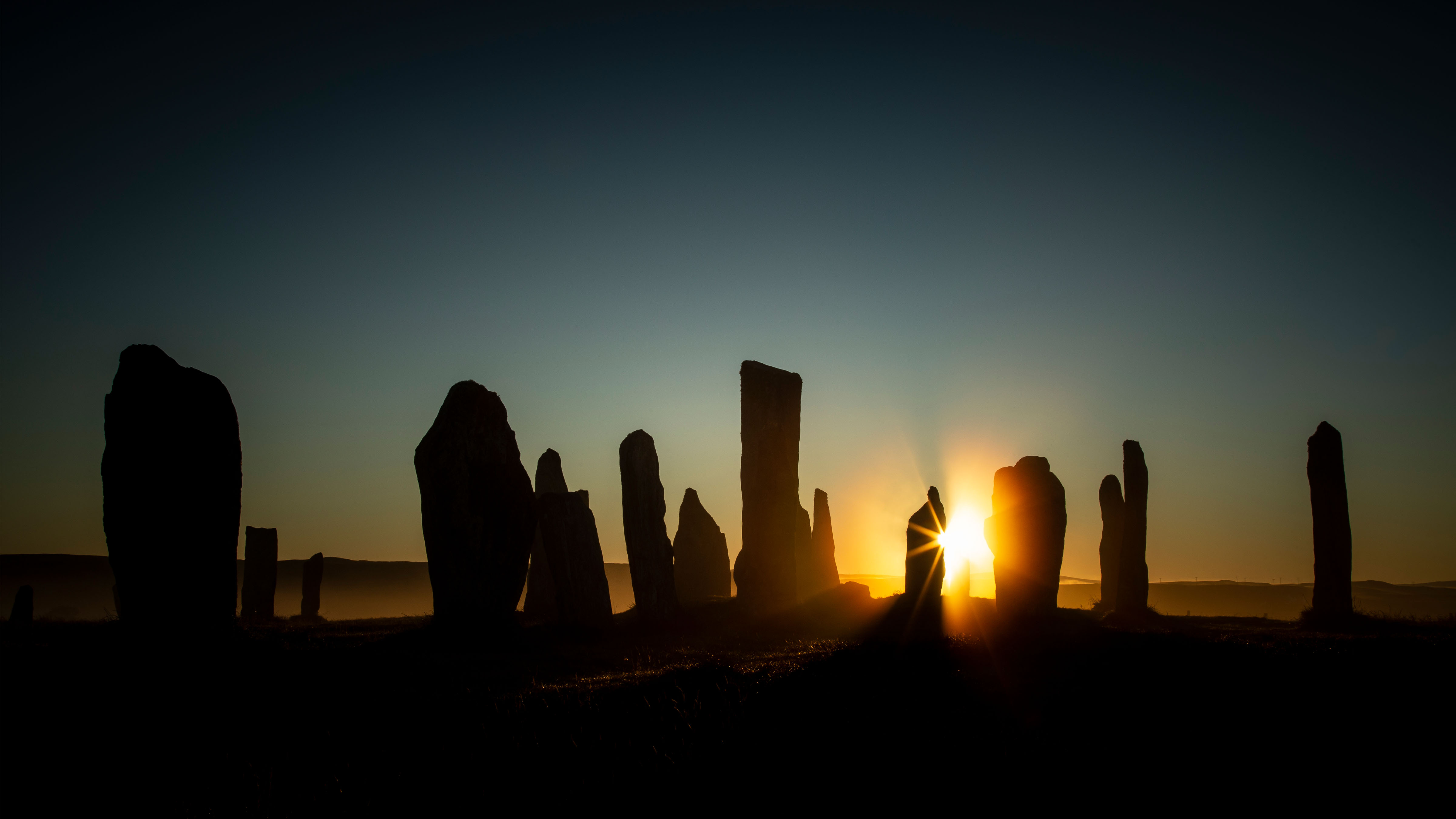
Description: The Callanish Stones are visible here at dawn, at roughly 5:30 in the morning local time. "This image is capturing the sun, just after summer sunrise, against the backdrop of the lochs and mountains."
The cross-shaped set of stones were erected about 5,000 years ago and are older than Stonehenge. Local populations used them for ritual activity for roughly 2,000 years, according to Historic Scotland.
Callanish Stone Circle with the Milky Way
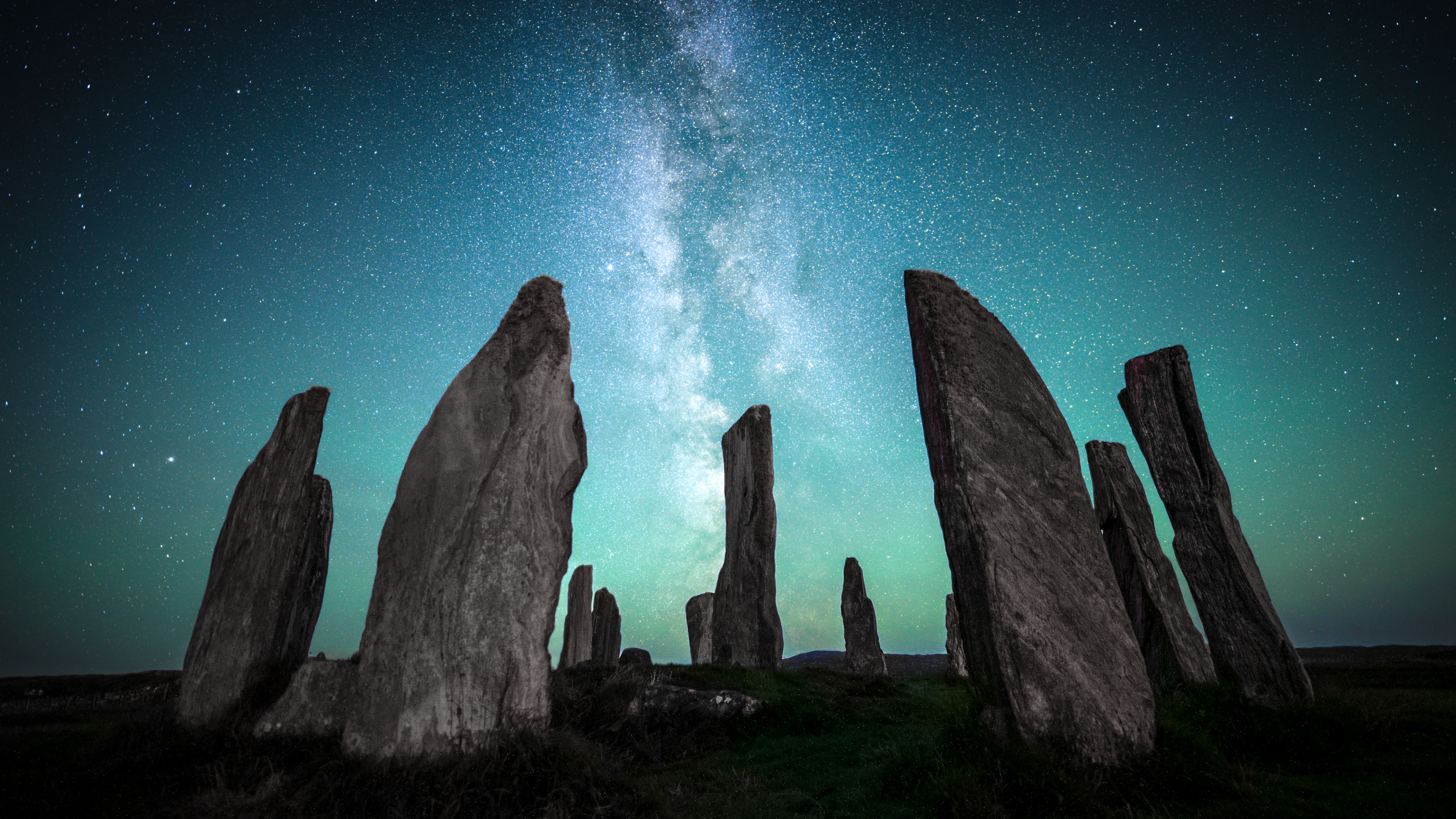
Callanish is far from urban centers, as the Outer Hebrides are off the west coast of Scotland. Nevertheless they have been populated for eons, and these days, their remote location is extra special because they have dark skies for residents to enjoy.
"It's one of the darkest, most remote places of the United Kingdom," Dury said. "Here (the sky) creates a very dramatic backdrop of the central parts of the main monuments of Callanish, capturing a really dynamic view of the universe."
Callanish Stone Circle with auroral arc
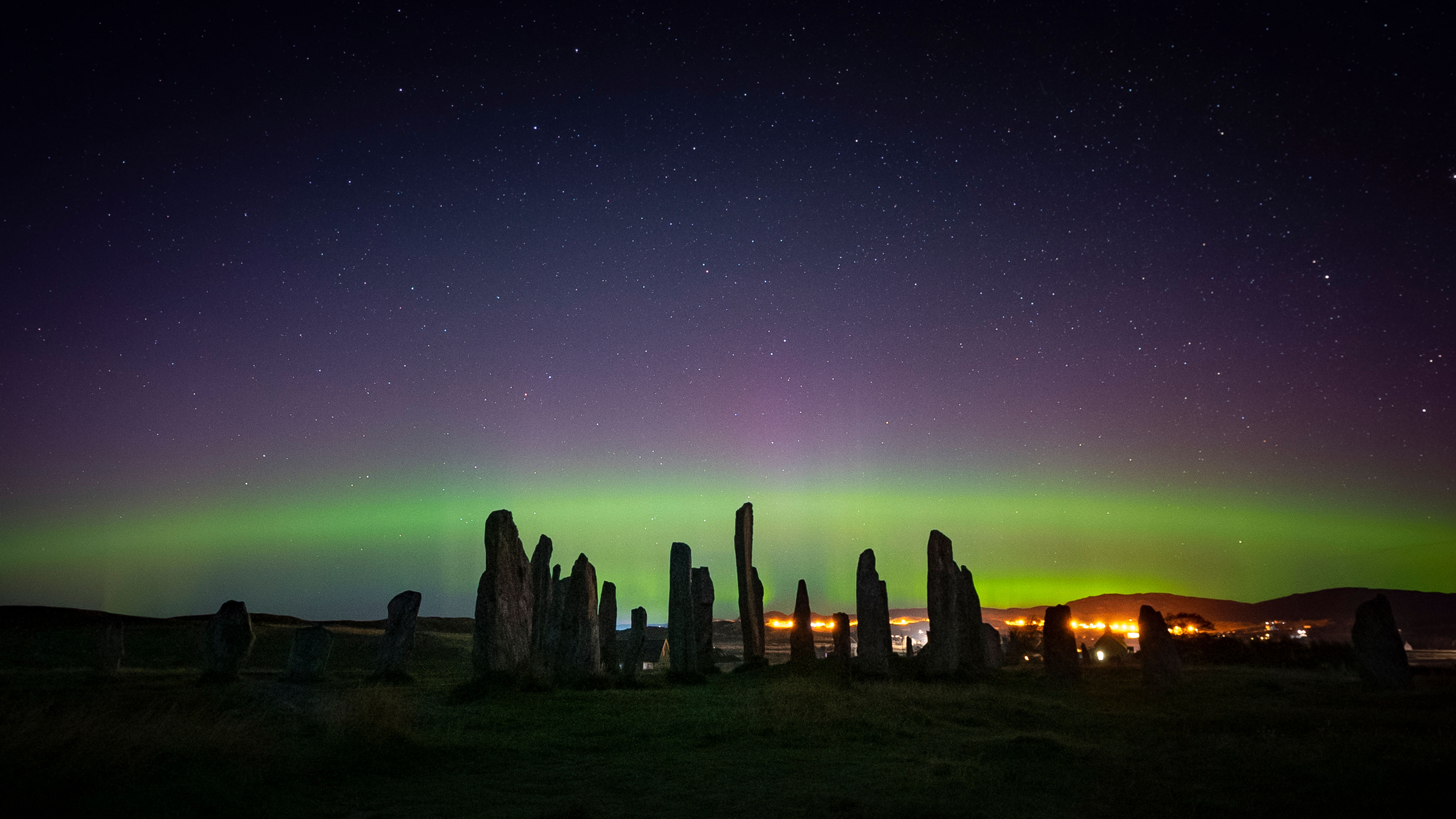
Callanish Stone Circle stands under the northern lights during the same geomagnetic storm. Dury said the auroras were experiencing a moderate display of about KP4. By comparison, places where the northern lights can be typically seen from any northernmost countries, including Iceland and Norway.
The northern lights happen when charged particles from our sun interact with Earth's atmosphere and magnetic lines.
"This was a really strong display, where you can see the curtains and the pillars shining on up into the night sky," Dury said. "We have different things happening in the atmosphere as well. Nitrogen is what ultimately causes the green effect of the aurora. Anything reacting with the Earth's atmosphere and the geomagnetic poles as well, will ultimately have an effect on the northern lights."
Avebury Stone Circle in the snow
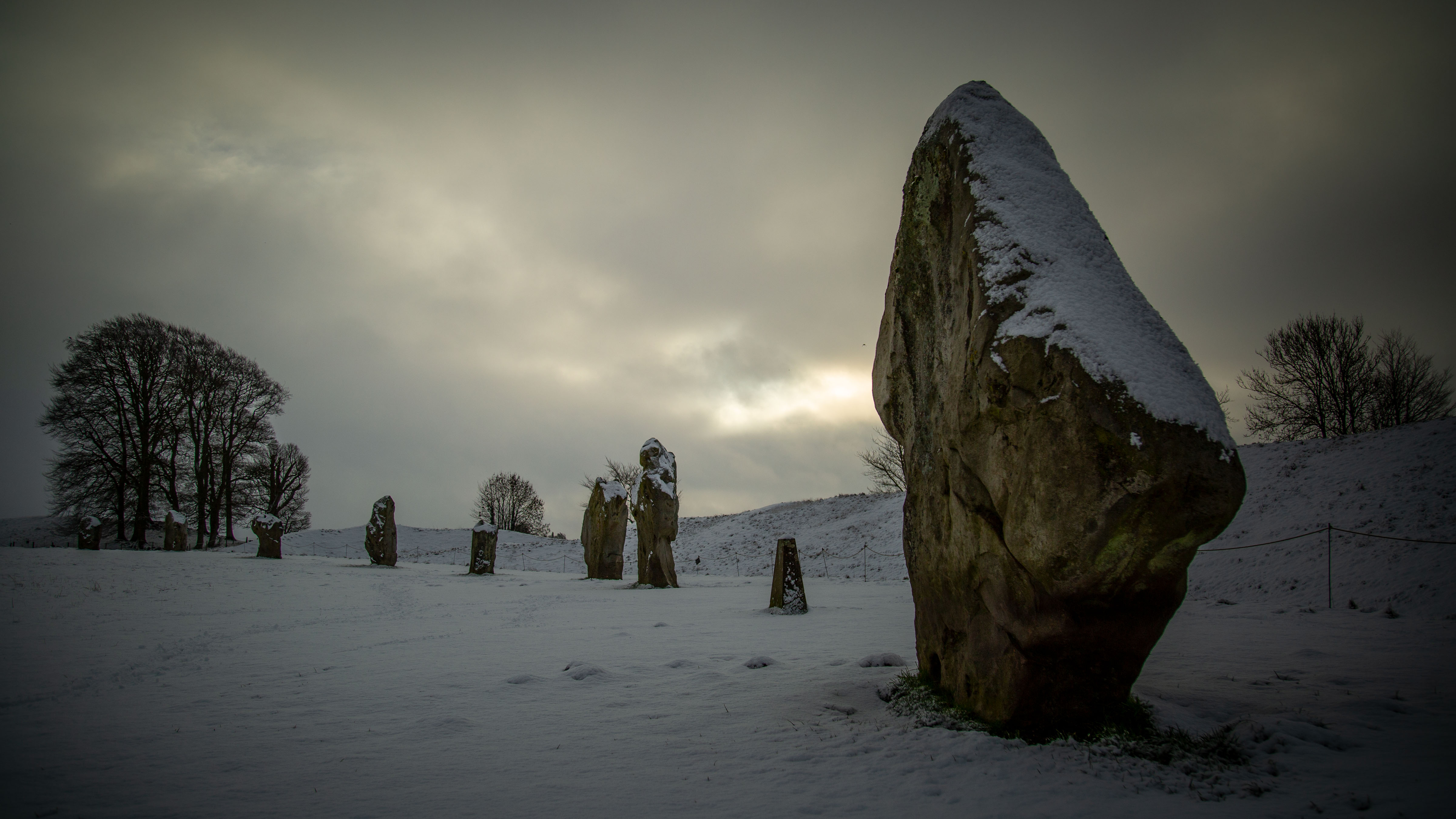
Avebury Stone Circle, located in roughly the same neighborhood as Stonehenge, is in Wiltshire, U.K. The 5,000-year-old stone circle may have been used to calculate lunar or solar alignments. It is the largest stone circle in Britain, featuring 100 stones and three concentric circles, according to English Heritage.
Dury was standing at the southwest corner of the circle when he took the picture. "Can you see that tree in the image, just over to the left? That's called the Wishing Tree. The majority of ancient sites celebrate the turning of the year and offerings are made" Dury said, referring to modern-day ceremonies undertaken by local populations. "People tie their ribbons to it, and the tree has been a very special place as a result of that."
Avebury Stone Circle at sunrise
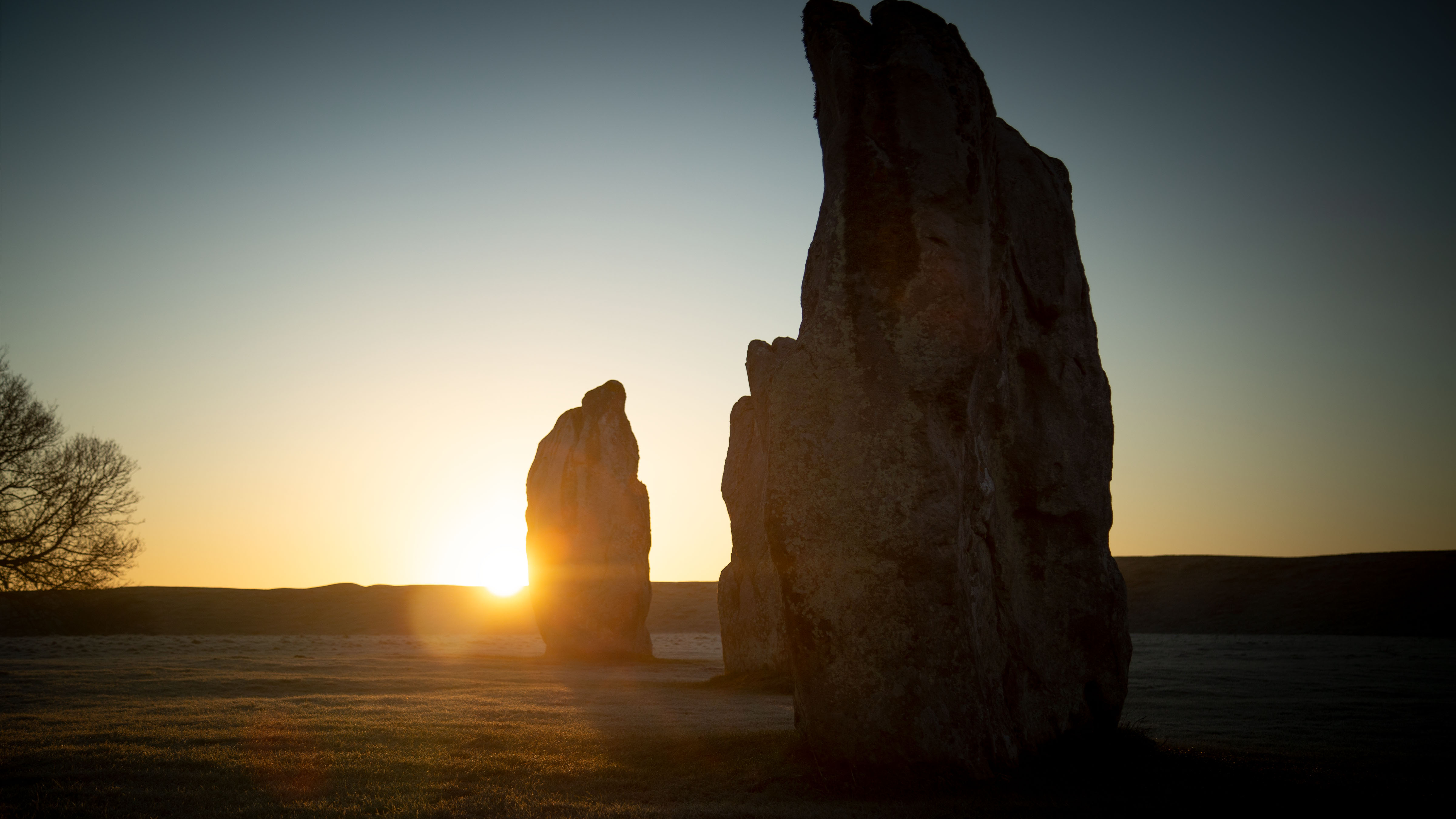
Another view of the Avebury Stone Circle shows sunrise at the equinox, when day and night are roughly 12 hours long. Dury was standing at the southeast quadrant of the circle, looking towards the smallest of the three concentric circles (which has unfortunately largely been destroyed over the ages.)
"It's possible to see the sun, as in this image, rising against such a dramatic backdrop," Notably, the stone circle is situated within the modern-day image of Avebury, which means that Dury had to hop along the other side of the road (compared with the previous image) to stand in this location.
Avebury Stone Circle against the Milky Way
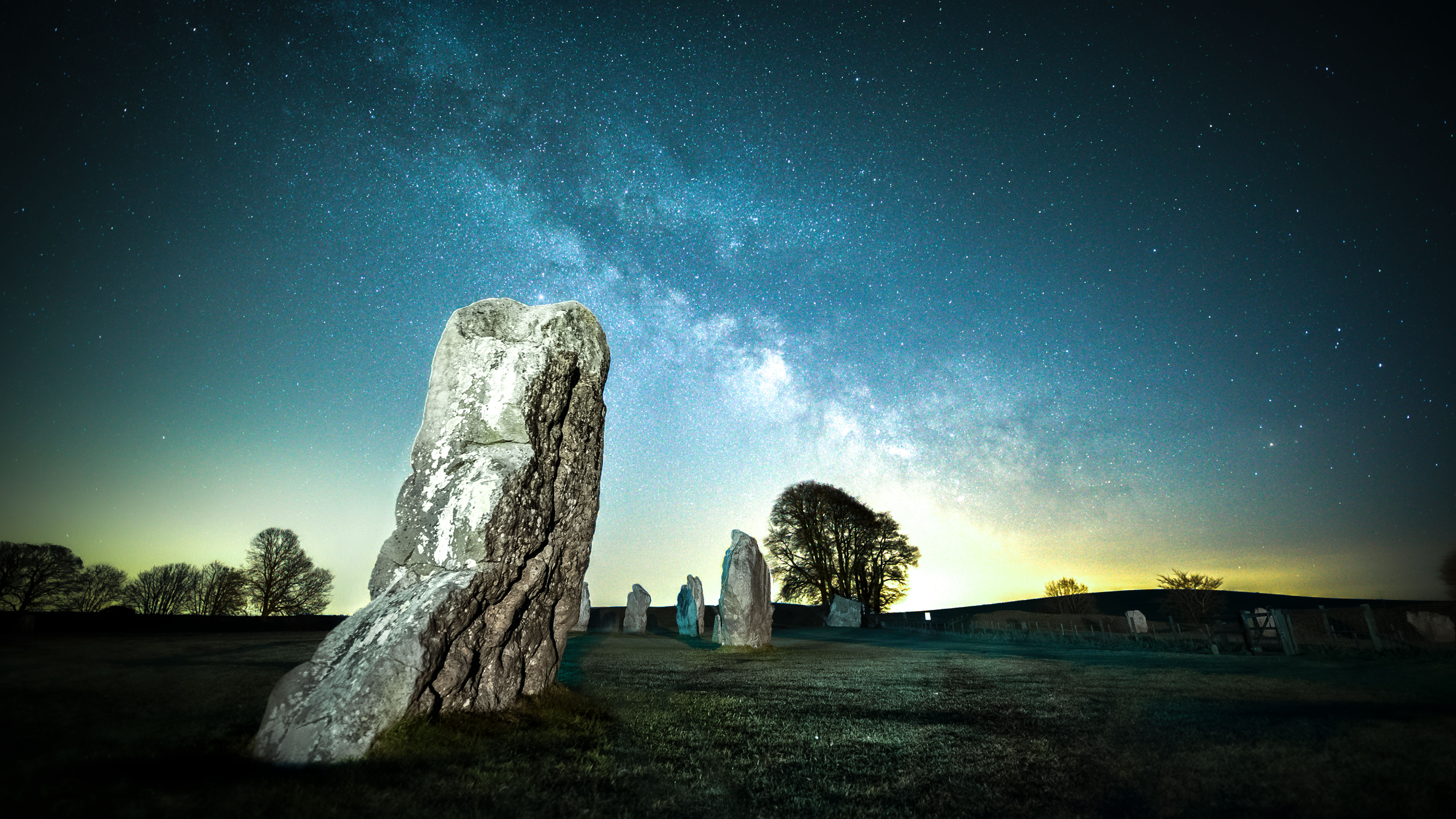
Another view of Avebury Stone Circle from the southeast quadrant captures what is called the "Goddess Stone" by locals, "against the backdrop of the Milky Way," Dury said.
Local interpretations of the Avebury Stone Circle have changed over the eons. While today local lore discusses the "goddess" in terms of regrowth and rebirth, in the Middle Ages there were concerns about pagan worship that led to some stones being buried or destroyed, English Heritage noted.
Other stones were removed due to changes in building or agriculture. Fortunately, early 17th century antiquarians, such as John Aubrey and William Stukeley, documented the layout of the stones in their time before some major changes occurred.
Winter Solstice at the Devil's Den
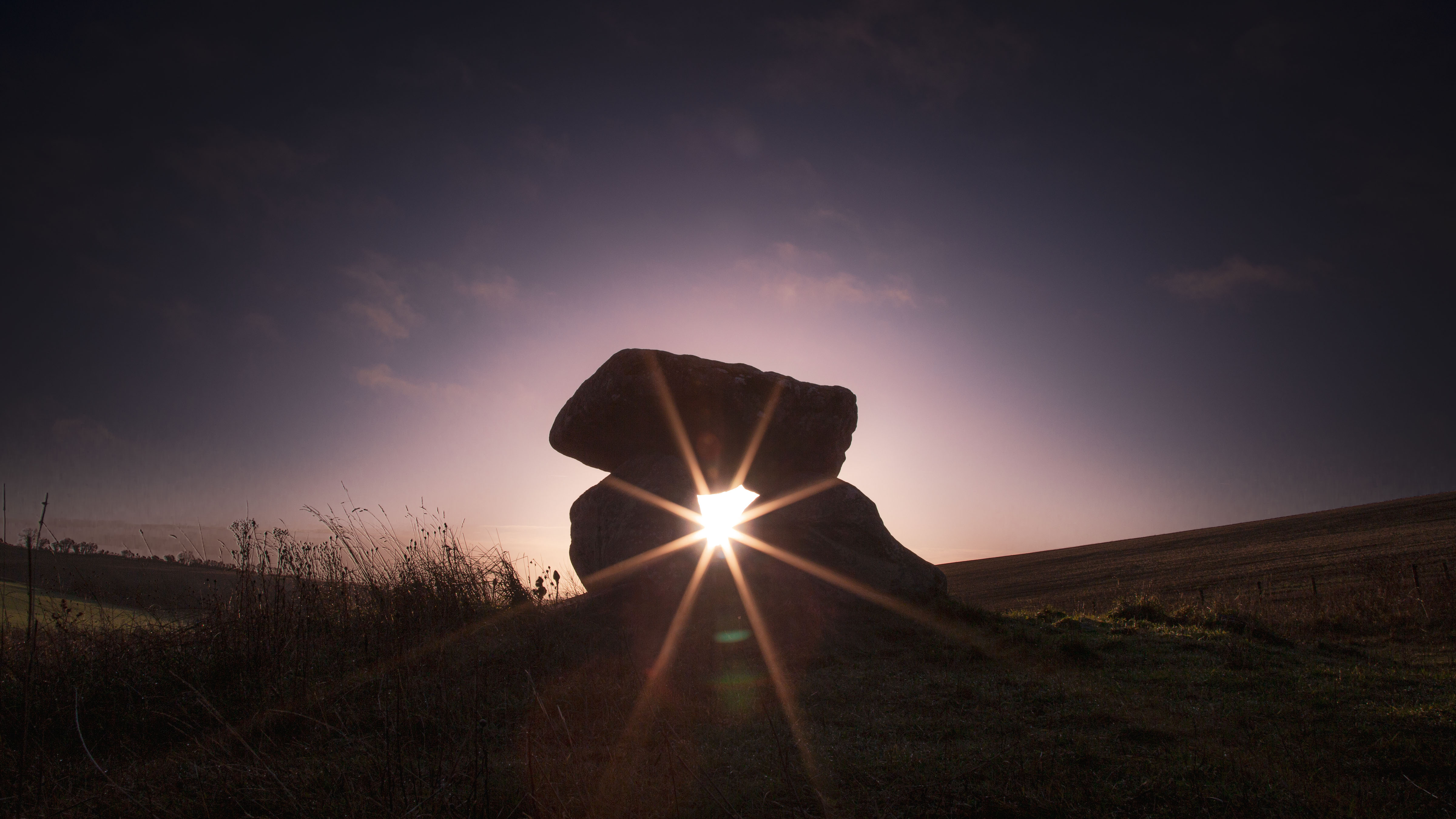
Devil's Den is the remaining structure from a burial chamber known as a dolmen, which features two upright and immense stones supporting a very large horizontal (cap) stone at their top. It is located somewhat near Stonehenge and Marlborough, a market town in Wiltshire. While the name dates to the Christian era, the burial chamber was constructed roughly 5,000 years ago, according to Historic England.
"It's in a valley, which is very unusual of long barrows," Dury said, as most barrows are situated in elevated terrain. "In this photograph at the time of winter solstice sunrise, and also during mid-summer sunset, you can see the sun at the beautiful archway off the dome."
Devil's Den and the Milky Way
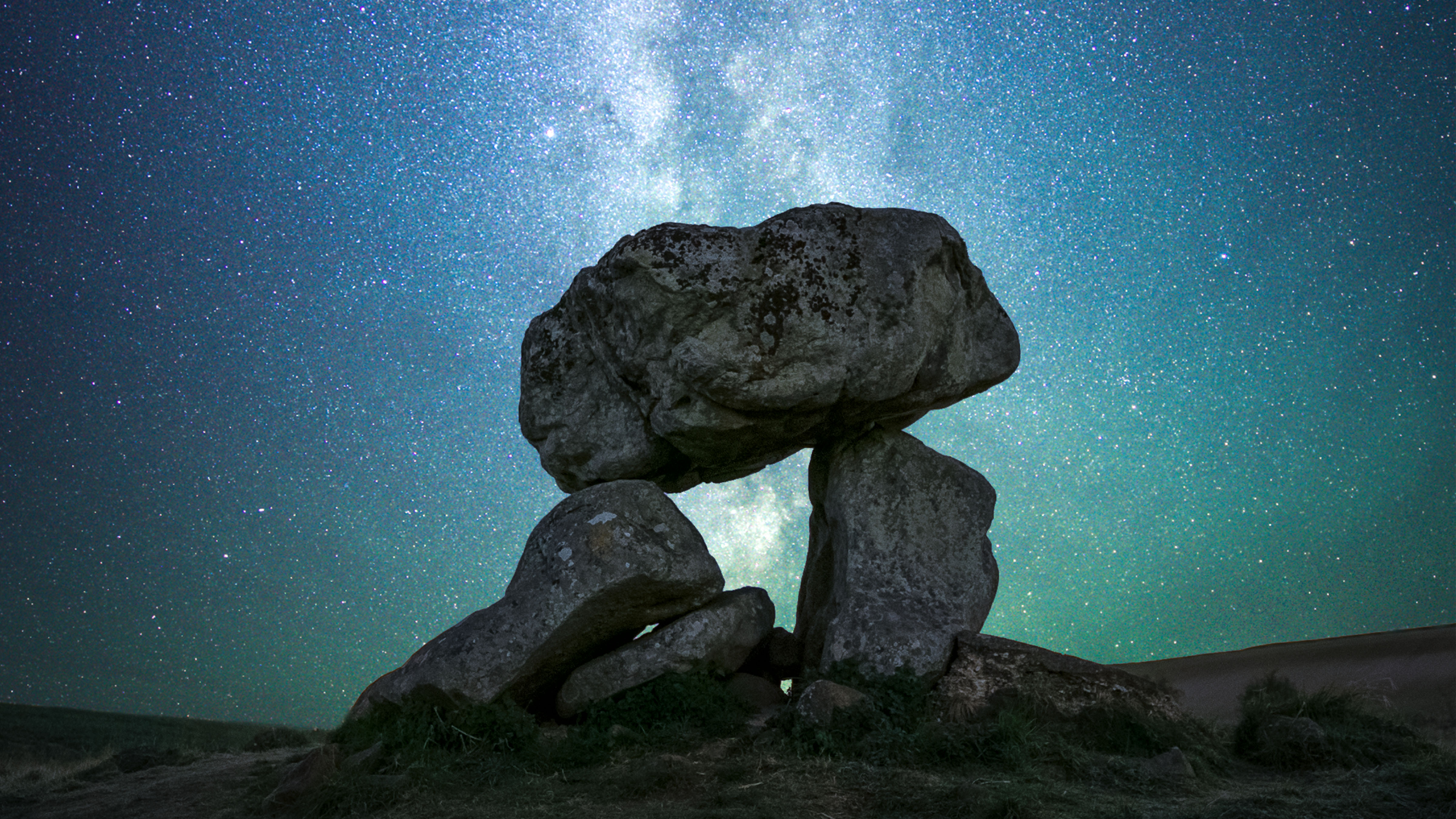
This alternate view of Devil's Den, taken at night, shows the Milky Way shining behind the dramatic dolmen stones. Dolmens were feats of Neolithic engineering that showed clever use of the local landscape to reduce all the work of hauling stones about.
"Our excavations have shed some light on how the feat was achieved," archaeologists Vicki Cummings and Colin Richards wrote in the United Kingdom's Current Archaeology magazine in 2014. The duo were talking in particular about work at Garn Turne Major in Pembrokeshire, in the southwest of Wales, but their studies may be applicable to other areas.
"After the capstone had been quarried from the bedrock," the archaeologists added of the construction process, "the monument could be built directly above it, allowing the stone to be raised in situ using levers."
Ancient sky maps in stone
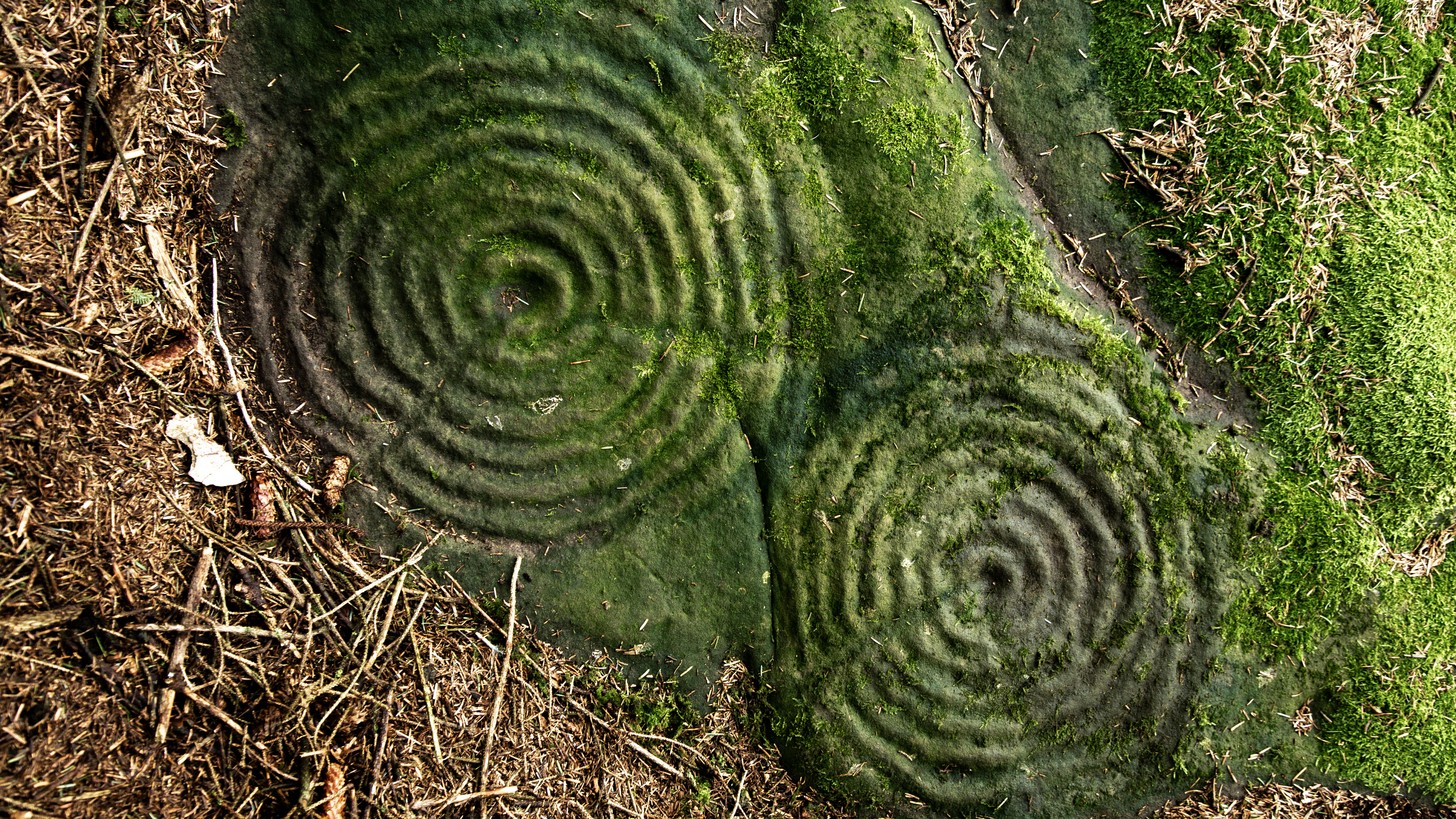
Ancient rock art in today's United Kingdom, between the Neolithic (roughly 5,000 years ago) and early Bronze Age (roughly 3,500 years ago), was often abstract in nature. While there are of course many interpretations for these circles in Northumberland on the edge of the Scottish border.
A potential linkage to astronomical mapping has been established in the research, such as in the book "Petroglyphs and the Stars in Northumberland" (P.F. Tullet, 2019, Cambridge Scholars Publishing). Navigation, tracking time and even local landscape mapping are potential other uses of these circles, Dury said of the theories.
"This was probably the most beautiful set [of rock art] that I have seen," Dury added. "It was so well-preserved. It hasn't been damaged, weathered. It was really lovely to see that in person."
Sunrise at West Kennet Long Barrow
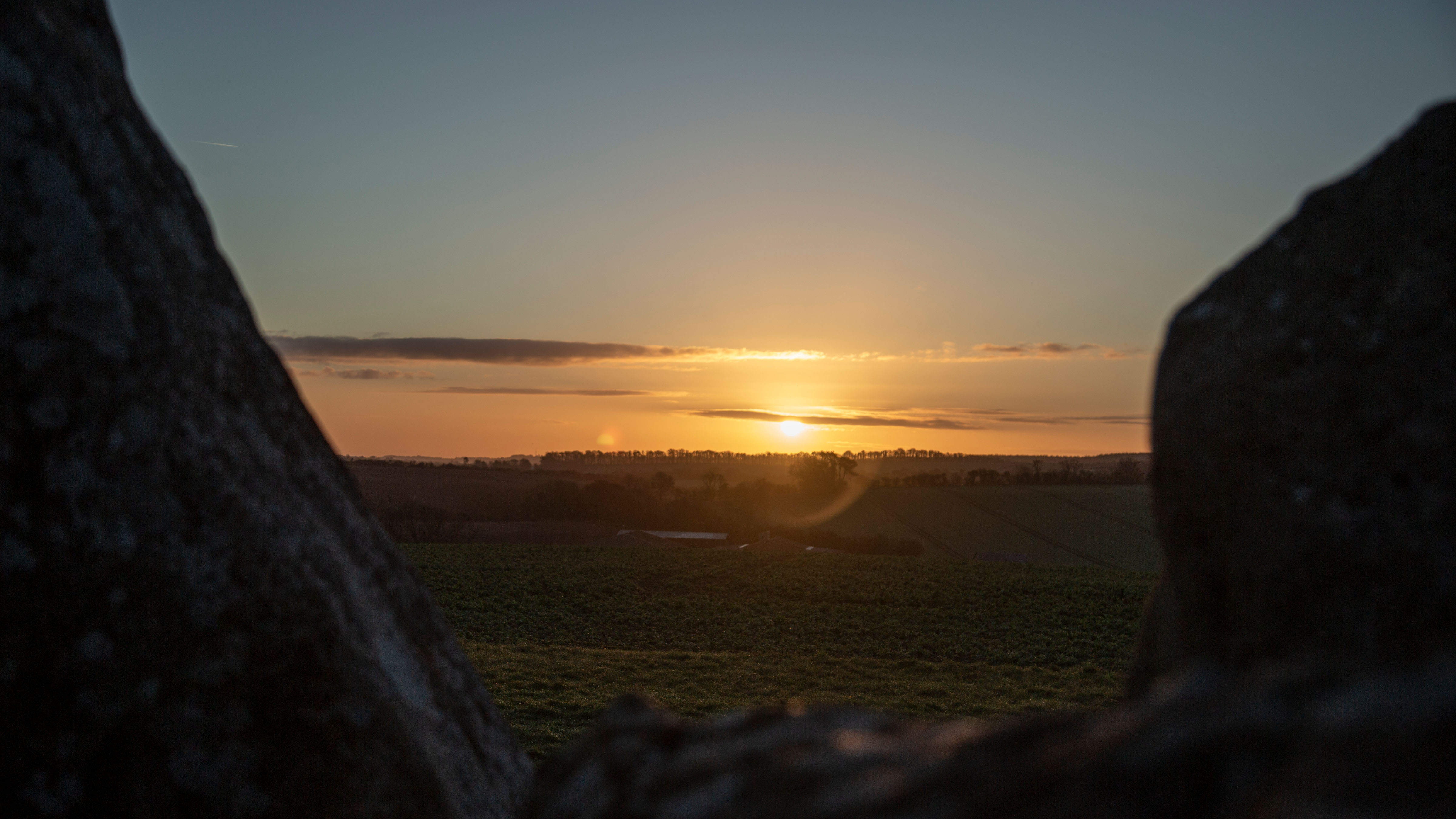
West Kennet Long Barrow is yet another famous ritual monument in the Stonehenge area. English Heritage describes the barrow as "one of the largest, most impressive and most accessible Neolithic chambered tombs in Britain." Nearly 50 people were buried in the chamber in ancient times, starting at about 3,650 BCE.
The barrow is most famous for allowing the sun to shine far within the chambers when the sun is at certain positions in the sky. "It's this beautiful dynamic solar alignment, which can be seen around the equinoxes, due to the way the barrow has been aligned and constructed," Dury said.
Sun shines in West Kennet Long Barrow
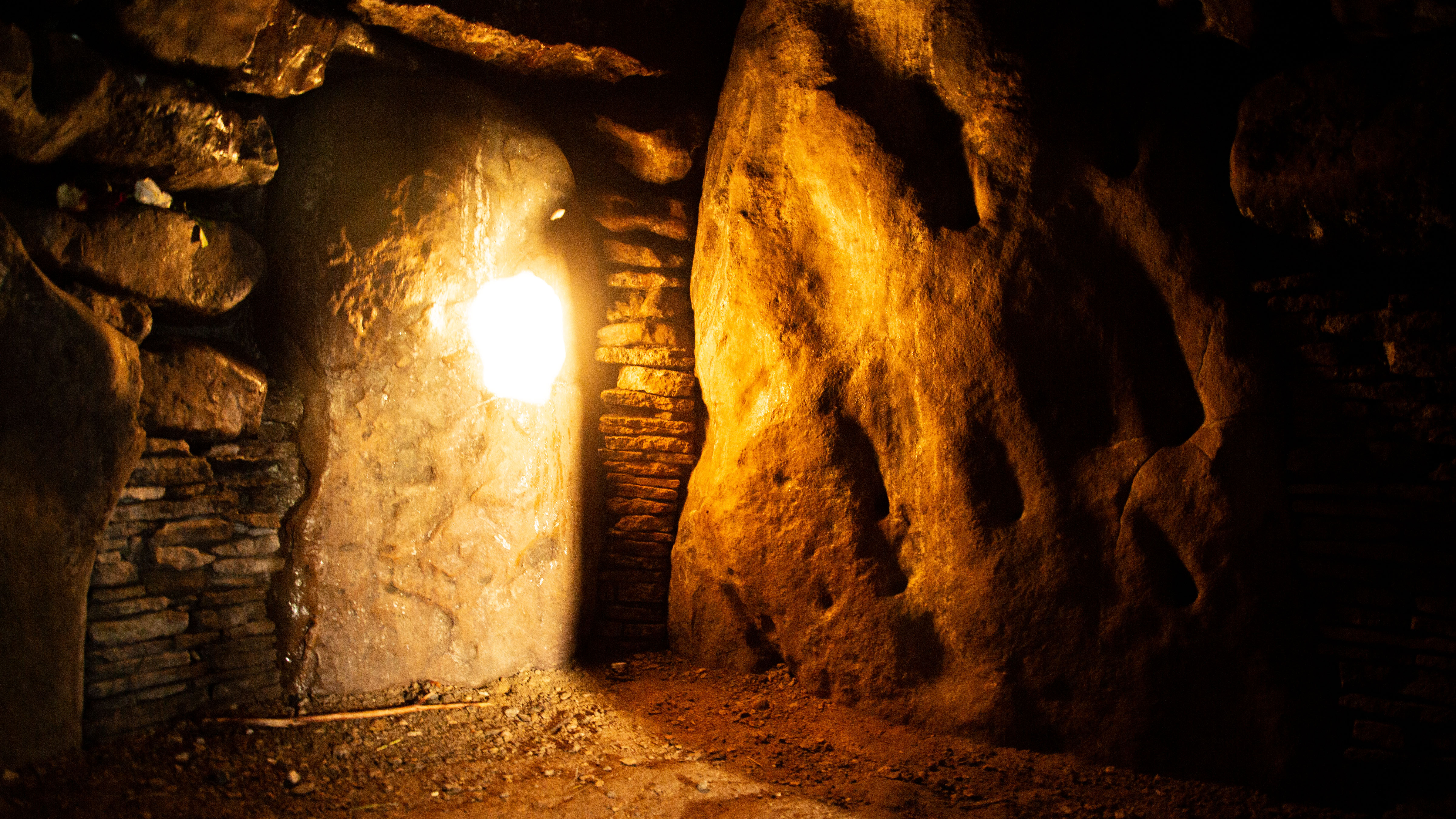
It took Dury three years of attempts to get the sun shining within the chamber of West Kennet Long Barrow. To be fair, a few lockdowns contributed to the disruption, but the 2020 attempt also was too cloudy.
"It's a really mysterious, dramatic, almost spine-tingling event, a 5000-year-old or more alignment of the sun casting its light onto the stone," Dury said. The position of the sun has slightly changed in our sky by a solar diameter, he added, but the sunlight still goes deep within the chamber.
"Reflecting the light of the sun is bringing about a sense of warmth for fertility, and life back to the ancestors who built it. I do believe it's like a mystical resurrection of the dead, with respect to our ancestors, allows us to be here today," he added.
West Kennet Long Barrow in the landscape
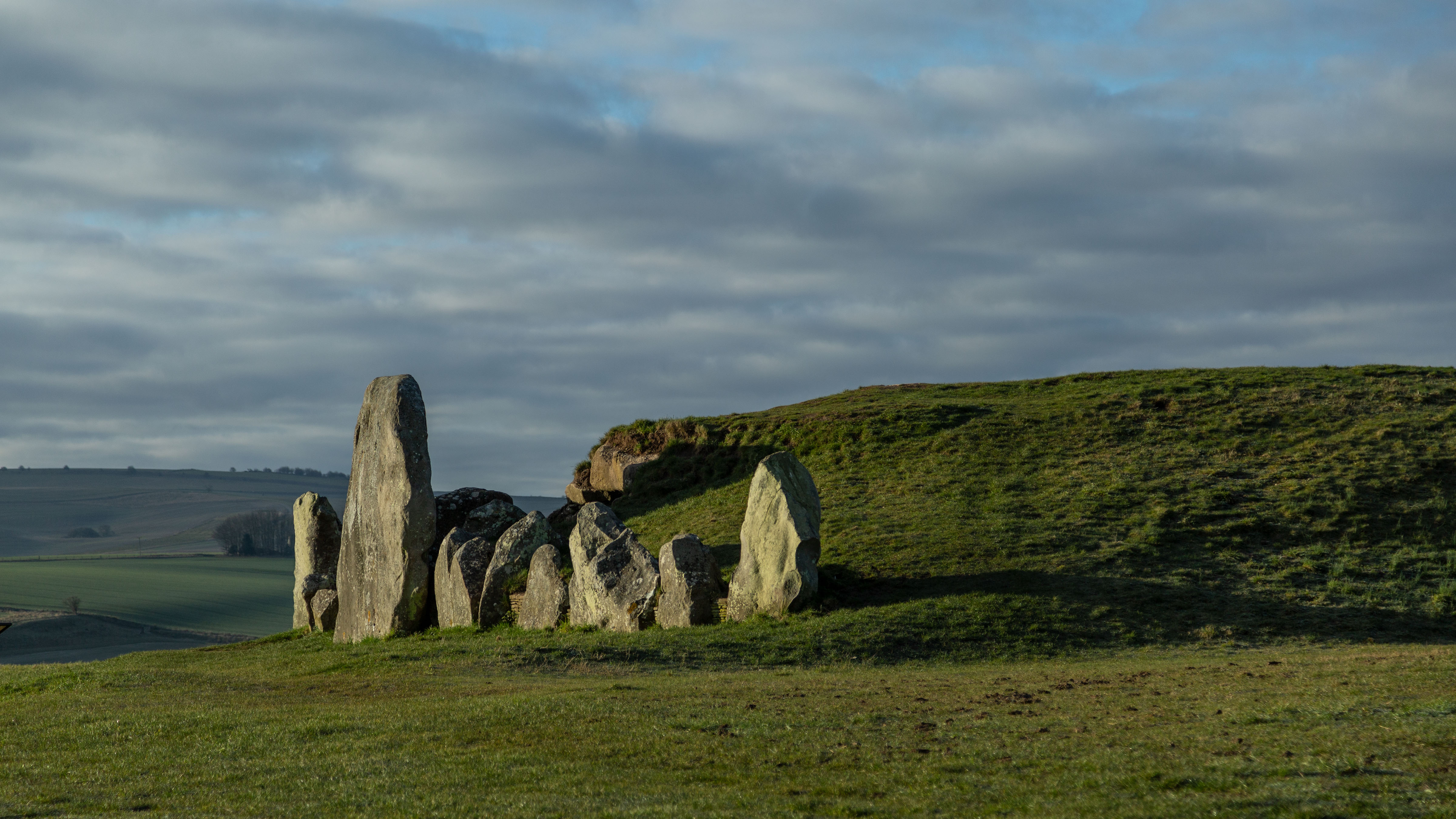
This outside view of West Kennet Long Barrow aims to "captures the sense and perspective of the burrow in relation to its modern landscape", Dury said. The background shows Alton Barnes, which is most famous for a 19th-century "White Horse" etched into the hill on large scale.
Dury emphasized that for all of the monuments we visit, it's important to recognize their importance within the local landscape. Burrows are often associated with circles and other earthworks, for example, which had importance to Neolithic peoples.
Shiny passageway at Stoney Littleton Long Barrow
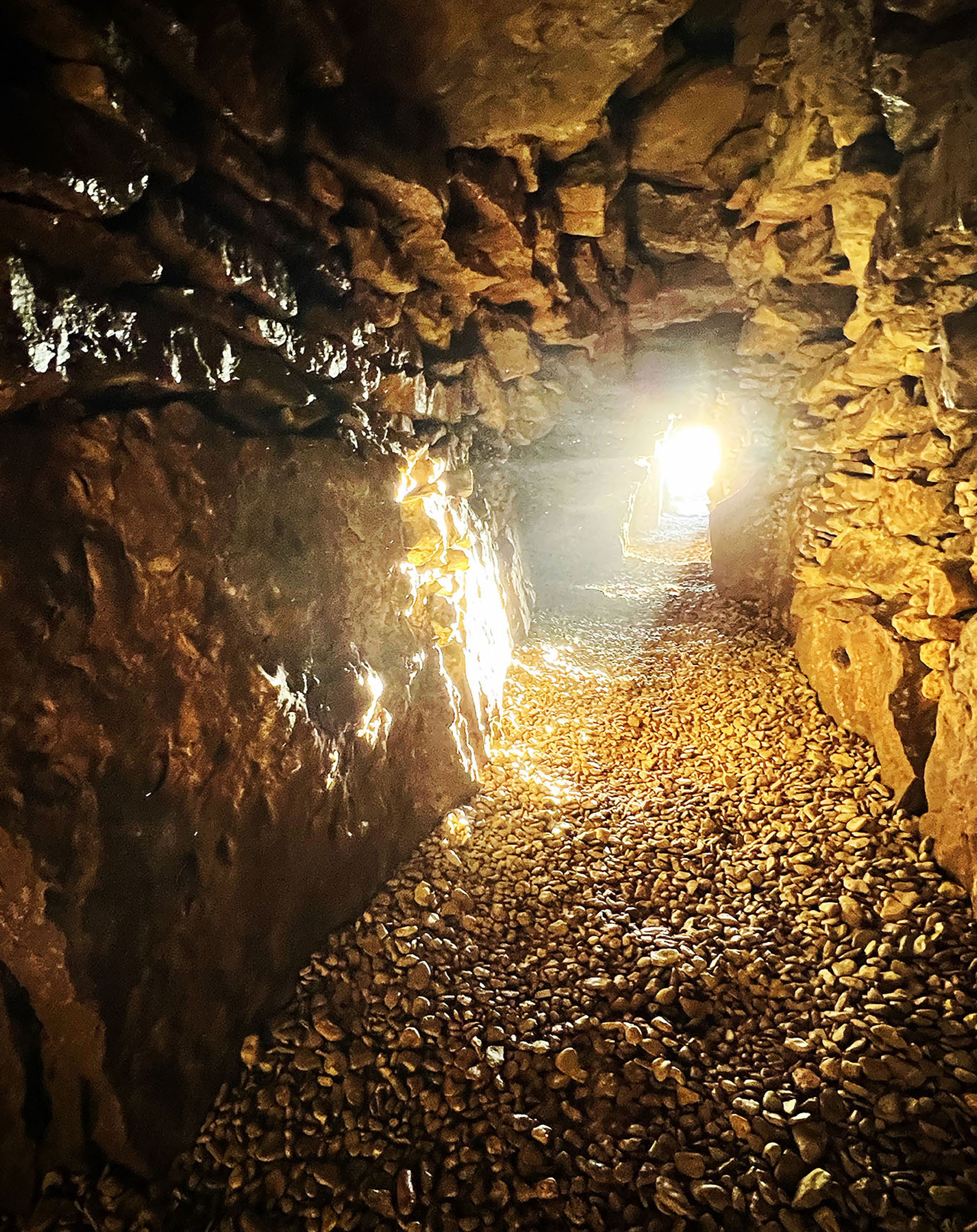
Stoney Littleton Long Barrow is located in Somerset, the county west of Wiltshire where Stonehenge and numerous other monuments are located. The monument is roughly 4,500 years old and includes multiple burial chambers in a complex roughly 100 feet (30 meters) in length, according to English Heritage.
"I love this one," Dury said of the image, which captures the winter solstice sun shining inside the barrow. "The light of the sun, as it rises, passes through the burial chamber and really channels this light onto a terminal stone."
Most barrows are located flat on the horizon, but Stoney Littleton is so high that it takes about 45 minutes for the sun to rise into the barrow. "This one's really special," Dury added. "The sun has effectively already risen [outside], but just due to the nature in which this barrow was built, this is what we happen to see."
Sun at Stanton Drew Stone Circle
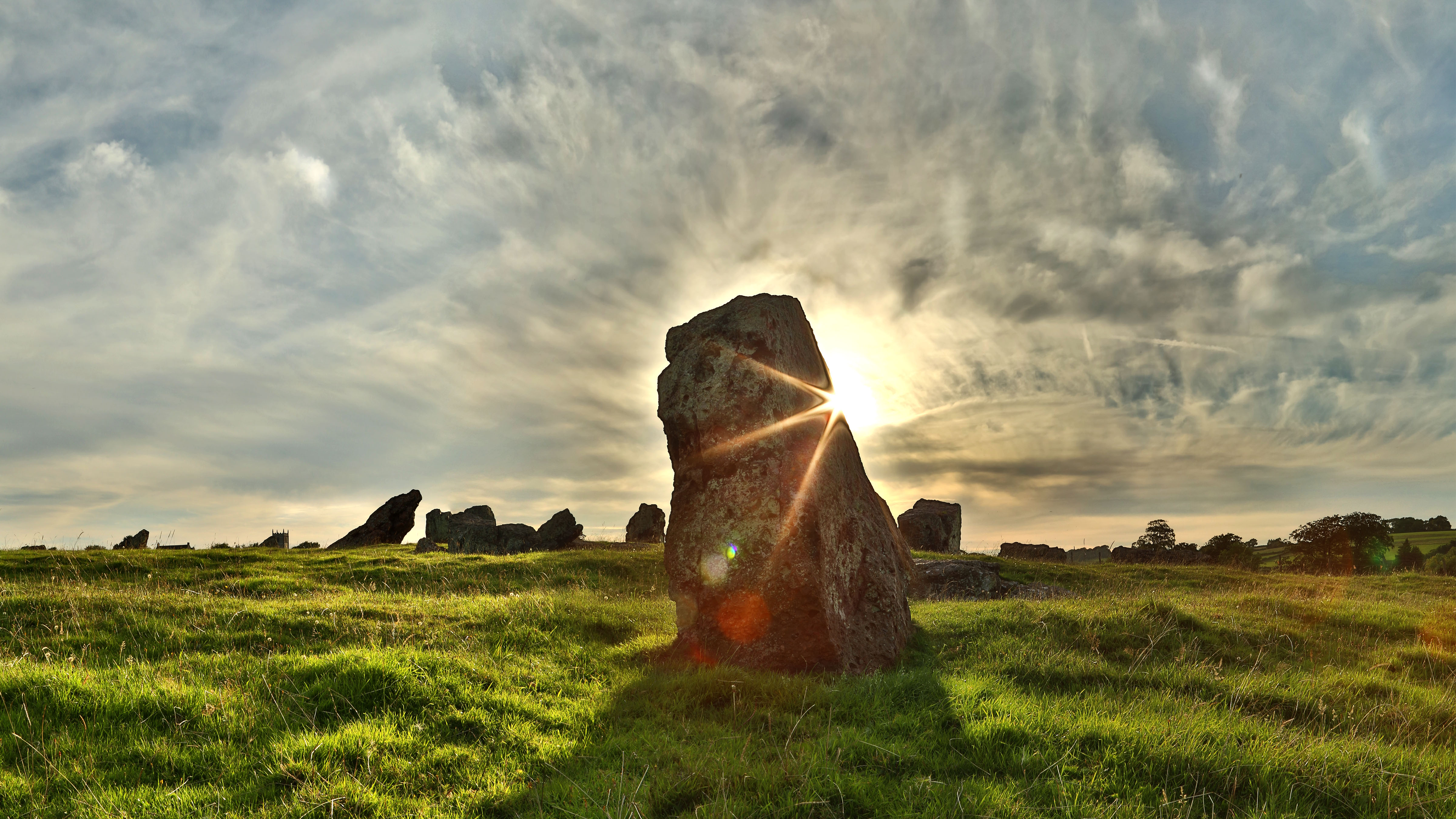
Stanton Drew Stone Circle is located in Somerset, a county west of Wiltshire where Stonehenge is located. The circle is the third-largest complex of prehistoric standing stones in England, according to English Heritage. It has three circles, the largest of which is 370 feet (113 meters) in diameter; that's roughly the size of a Ferris wheel.
"This one in particular is aligned to lunar alignments," Dury said of the research on Stanton Drew. "But the stone which I'm focusing on here is actually outside of the circles. This is called the "Vortex" (by locals). So, a bit of myth and legend for you: this stone — when you lean up against it is meant to have an energy that pushes you off to the left."
Rollright Stone Circle in the snow
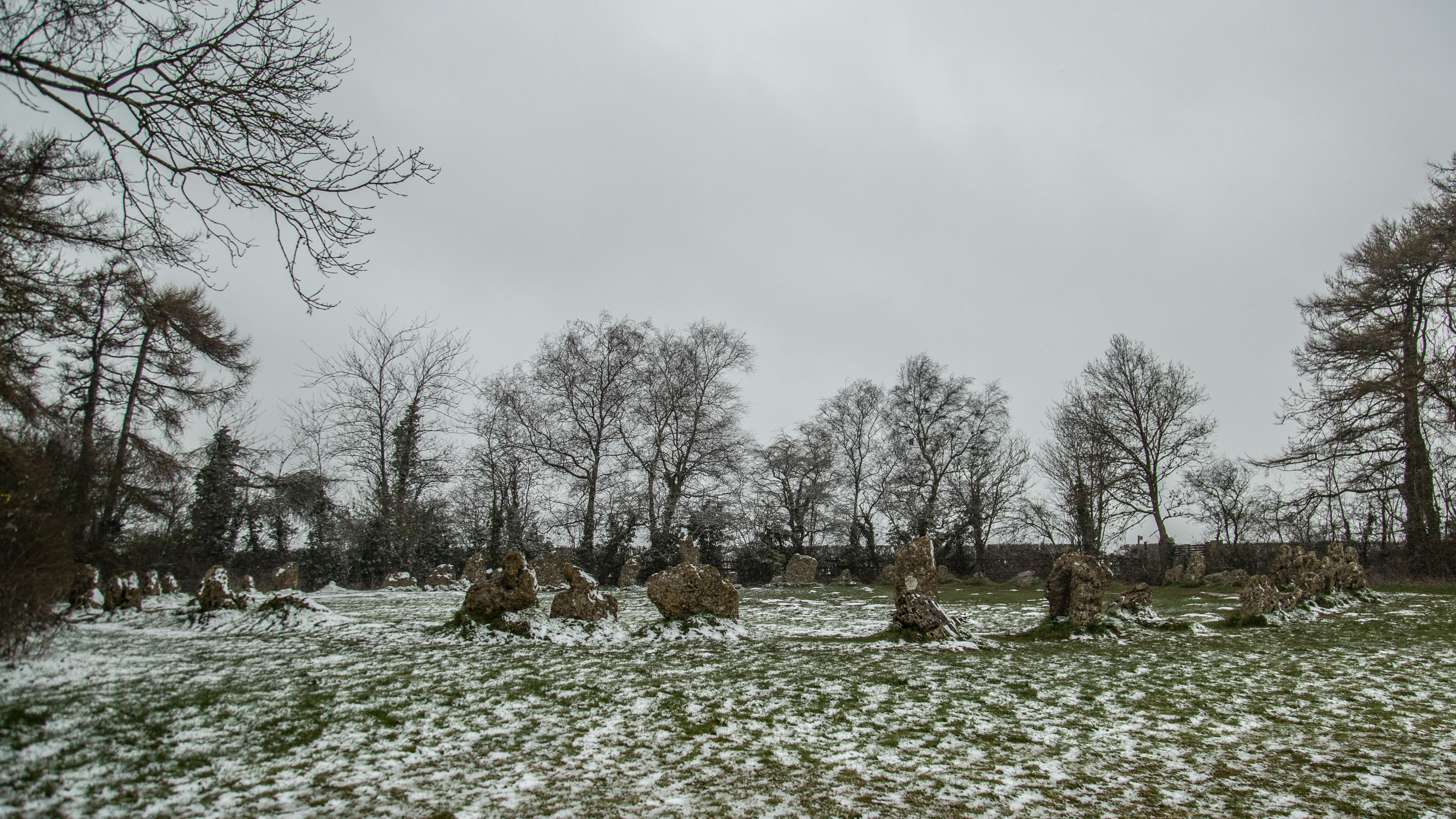
It is possible that Rollright Stone Circle, which dates to as far back as 3,800 BCE, was used for astronomical purposes. It is also northeast of Wiltshire, where Stonehenge is located. But the records and archaeology show more prominence for funerary commemorations, farming and even serving as a ceremonial meeting place during Saxon times (early in the first millennium AD), according to the Rollright Trust.
In the modern age, there are plenty of astronomy associations, however. The trust holds events for the summer and winter solstices, and the area has excellent observing skies due to it being situated in a certified Dark Sky area. The Chipping Norton Amateur Astronomy Group is known to use the circle as a field observatory, and TV shows like "Dr. Who" and "Stargazing Live" have filmed there.
Stone with circles at Newgrange Stone Age Passage Tomb
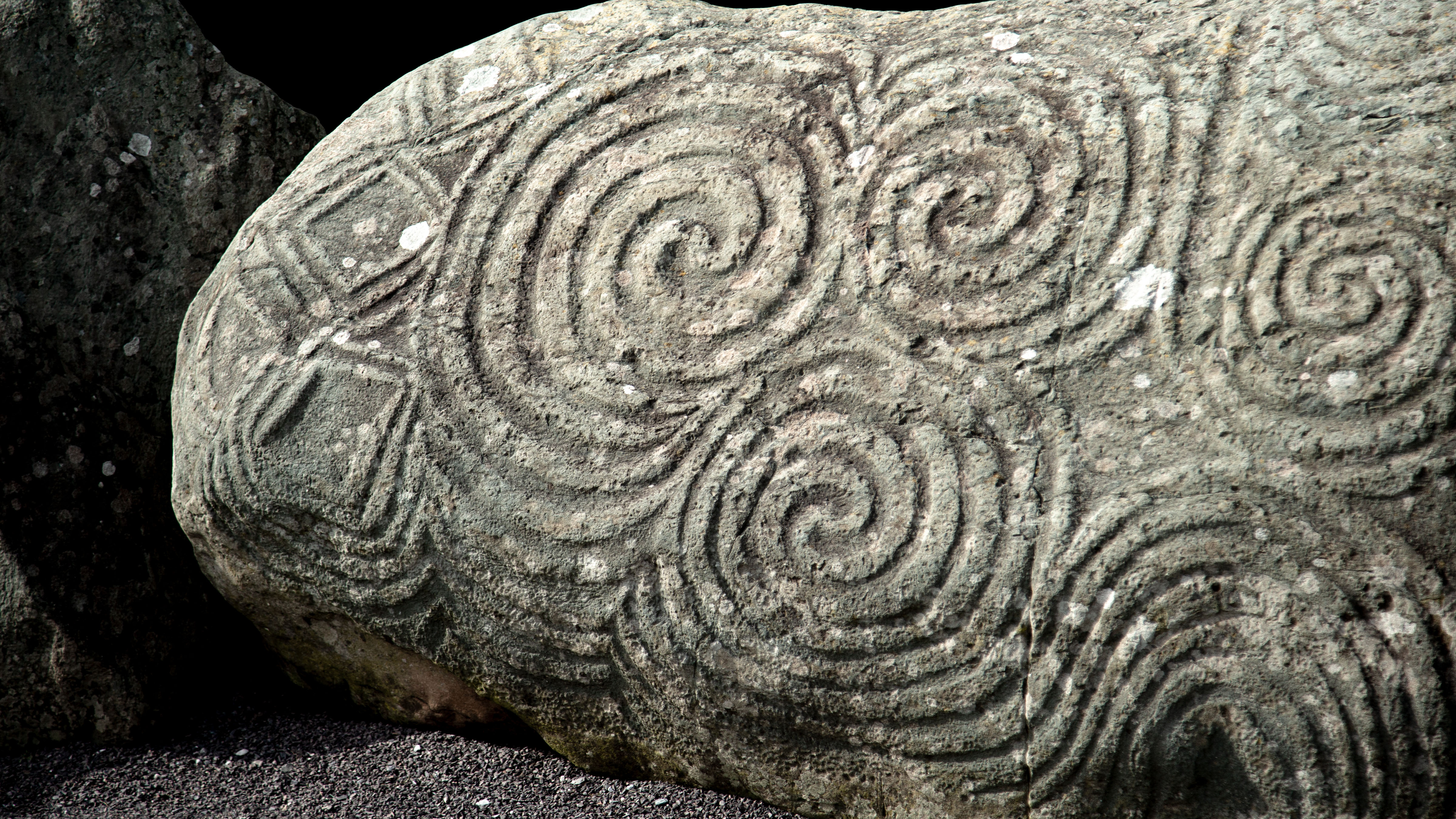
Northern Island has its own spectacular prehistoric monuments, including Newgrange Stone Age Passage Tomb. Believed to be roughly 5,200 years old, the mound features a 62-foot (19-meter) passage that is aligned with the rising sun during the winter solstice period, according to Newgrange's visitor website. It features 97 huge boulders, called kerbstones, including the famous entrance stone that you see here.
"These spirals are believed to capture the movements of the sun over the period of the year," Dury said of the entrance stone. Studies have suggested that the size of the spirals are meant to represent the different pathways of the sun, across the sky, during the winter and summer.
Constellation Cassiopeia rendered in Stone Age art?
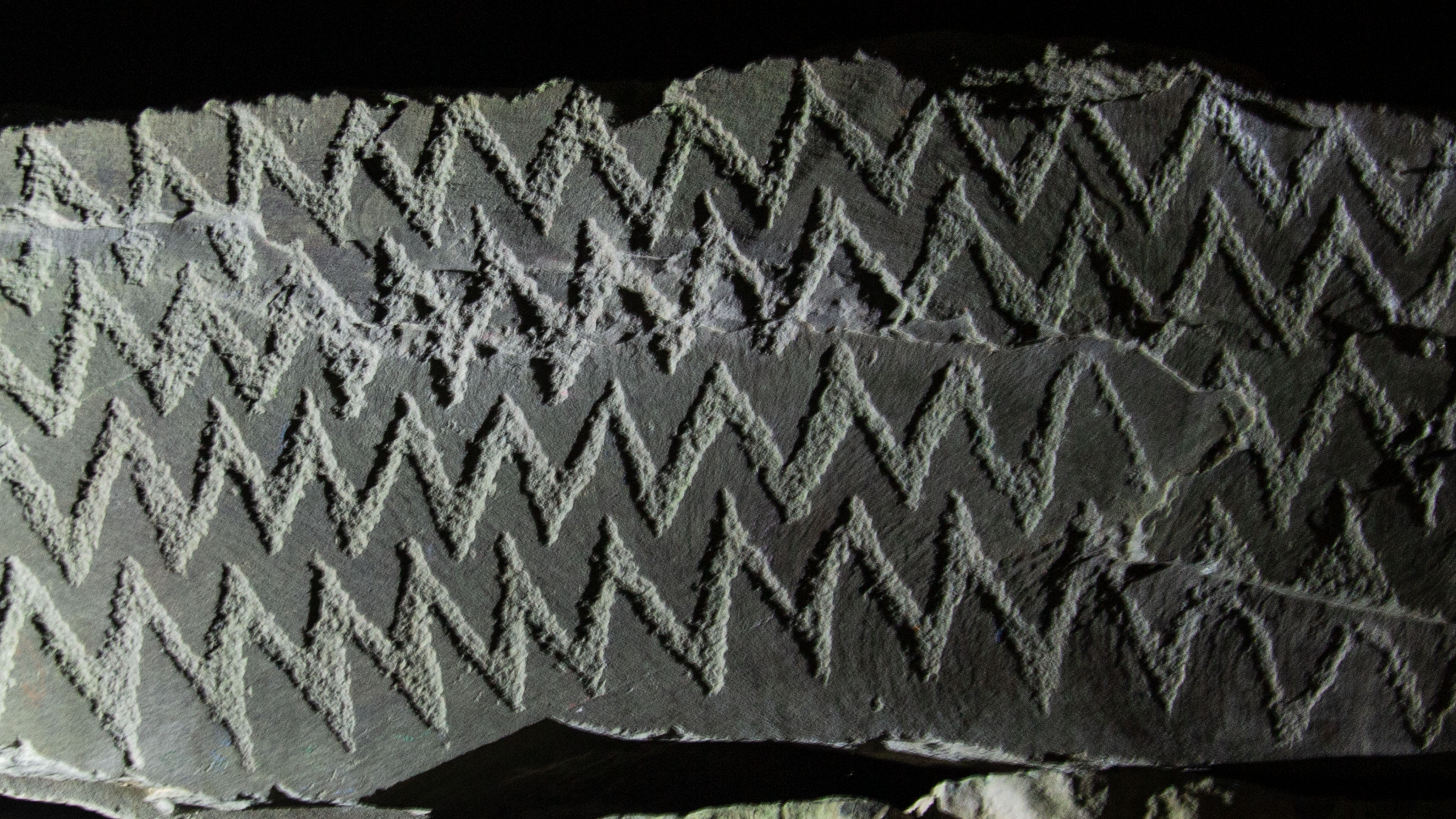
Fourknocks is located somewhat near Newgrange, between Ardcath in County Meath and the Naul in County Dublin. It is also a Neolithic passage tomb built roughly 5,000 years ago, according to the Discover Boyne Valley tourism site. The name Fourknocks, the site writes, may be from the Irish "Fuair Cnocs", meaning Cold Hills.
Abstract art adorns the passage graves of Fourknocks and may include the earliest depiction of a human face in Ireland. This photo, however, focuses on a series of chevrons that may represent what the International Astronomical Association calls the Cassiopeia constellation, according to Fourknocks' visitor center website. (Your tradition may have alternate names for that part of the sky.)
"We believe the stone was a predictor for when you saw this constellation above the horizon; you would notice its adjacent position to the sun," Dury said. "So in theory, using that evidence, you'd be able to calculate how long it would take for the sun to rise up to the horizon."
The W shape, he added, may have been repeated in the stone to indicate the W-shape drifting across the sky as the night continues – similar to what we can capture today in time-lapse pictures.
Kilmartin Glen
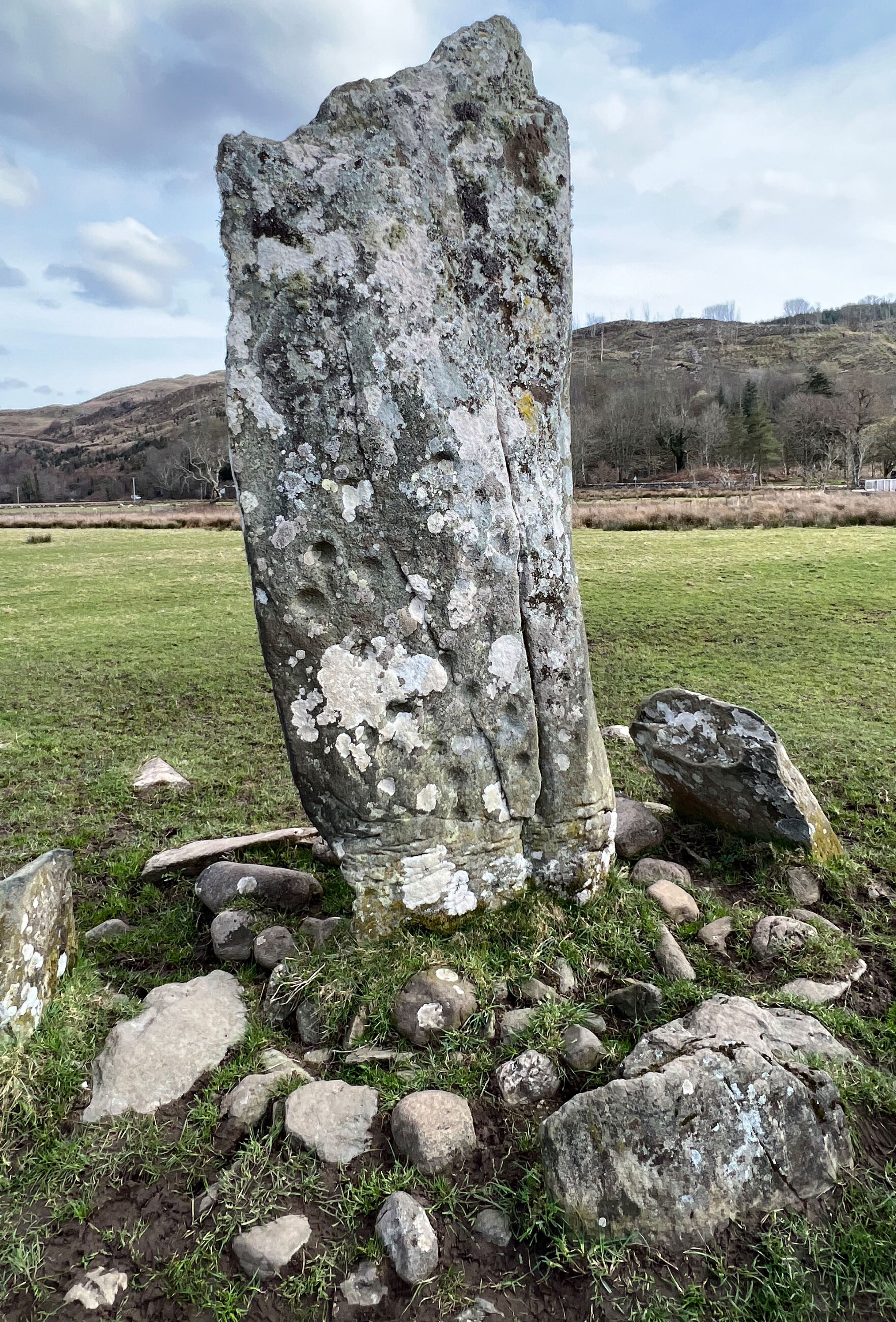
Kilmartin Glen, in western Scotland, is known for being absolutely thick with prehistoric monuments. Some estimates suggest there are something like 800 monuments concentrated in a radius of just six miles (10 kilometers).
The stone featured in this photo, Dury said, has cup marks on the surface that may be aligned with lunar standstills, or when the moon and the sun are either as far away as they can be in the sky or as close as they can be in the sky (a roughly 19-year gap.)
The sun meets solar art in a Neolithic passage tomb
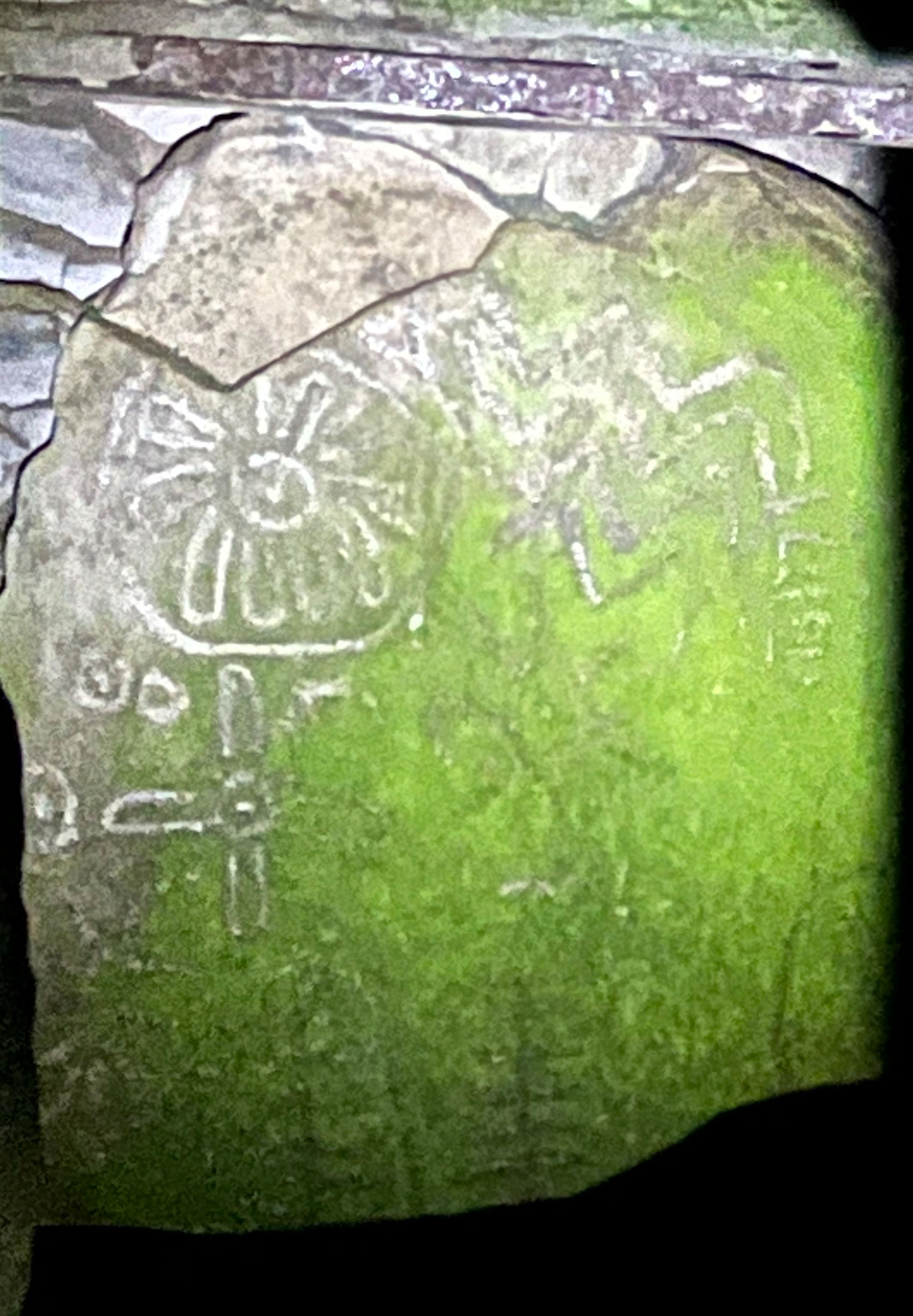
This stone art is found within Loughcrew, which is nearby Oldcastle in northwestern Ireland. There are numerous ancient monuments that are found "within the radius of a rifle-shot," according to a local guidebook for the region. The passage tomb where the stone art is found was made in roughly 3,200 BCE.
"This barrow is aligned to the sunlight of the spring equinox," Dury said. "Because of the way the light is channeled, it forms a square on the back of this beautiful stone. The idea is that it centers on these beautiful, cartoon-like images of the sun, and tracks its way across the stone."
Elizabeth Howell is the co-author of "Why Am I Taller?" (ECW Press, 2022; with Canadian astronaut Dave Williams), a book about space medicine. Follow her on Twitter @howellspace. Follow us on Twitter @Spacedotcom or Facebook.
Join our Space Forums to keep talking space on the latest missions, night sky and more! And if you have a news tip, correction or comment, let us know at: community@space.com.
Get the Space.com Newsletter
Breaking space news, the latest updates on rocket launches, skywatching events and more!

Elizabeth Howell (she/her), Ph.D., was a staff writer in the spaceflight channel between 2022 and 2024 specializing in Canadian space news. She was contributing writer for Space.com for 10 years from 2012 to 2024. Elizabeth's reporting includes multiple exclusives with the White House, leading world coverage about a lost-and-found space tomato on the International Space Station, witnessing five human spaceflight launches on two continents, flying parabolic, working inside a spacesuit, and participating in a simulated Mars mission. Her latest book, "Why Am I Taller?" (ECW Press, 2022) is co-written with astronaut Dave Williams.
